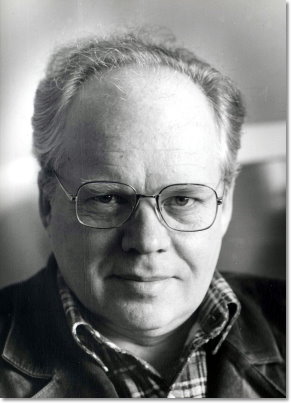 |
RSS feeds |
|
|||||
| Issue 12, 2025 |
|
||||||
|
|
|
||||||

|
60 seconds with authorsSadovskii Michail V.Institute of Electrophysics, Ural Branch of the Russian Academy of Sciences, Ekaterinburg, Russian Federstion
What led you into science and your chosen area of research?
As a matter of fact I have grown up surrounded by the scientists – my father was a well known expert in the field of physical metallurgy, he worked in the USSR Academy of Sciences. At home we frequently were visited by various people working in science, though there were actually very few theorists. Thus, my choice of this specific field was in fact much influenced by the book of Ya.B.Zel’dovich – “Higher Mathematics for the Beginners”, which I have read when I was just 15. Immediately after that I have started more or less serious studies in theoretical physics using books by Landau and Lifshits, Feynman and some other famous people. In a narrow sense, the field of my research (electrons in disordered systems, metal-insulator transitions, superconductivity) was finalized during my post graduate work in the theoretical physics department of P.N. Lebedev Physical Institute, under the influence of such people as L.V.Keldysh (my supervisor) and V.L.Ginzburg. Can you describe the results in your paper (Physics-Uspekhi 44, No.5, 515-540 (2001)) and their importance for your field? In recent years I have mainly tried to develop a certain approach to a theoretical description of the pseudogap state in high-temperature superconducting cuprates. Our original approach is based on the assumption of the decisive role of antiferromagnetic short-range order fluctuations, which actually compete with superconductivity. It seems (as confirmed by more recent work) that using this approach we can really describe many properties of this unusual state of the matter. What research projects are you working on at the moment? There are several projects – further development of our model of the pseudogap state, some attempts of theoretical description of metal-insulator transitions in strongly disordered Anderson-Hubbard model, the search of generalized dynamical mean-field theory (DMFT) approach to strongly correlated systems with the account of non-local (spatial) fluctuations. In the recent month or two we are trying to think on physics of the new class high-temperature ReOFeAs superconductors. What do you think will be the next big breakthrough in your field? Hopefully, in the few years time we shall finally understand the microscopic mechanism of high-temperature superconductivity in cuprates. It is quite possible that this will be helped by this recent discovery of ReOFeAs superconductors. This will show whether we can achieve even higher values of Tc. In general, we should expect a very serious progress in our understanding of strongly correlated electronic systems. What book are you reading right now? Speaking on science, I have just completed reading of a nice “semi-popular” book by K.Huang — “Fundamental Forces of Nature (The Story of Gauge Fields)”. Just before it I have read with a great interest a book by Y.Aharonov and D.Rohrlich – “Quantum Paradoxes (Quantum Theory for the Perplexed)”. Probably now I shall try to overcome R.Penrose — “The Road to Reality”. Outside science I like memoirs, so in my plans is to re-read a new (expanded) edition of Ilya Erenburg — “People, Years, Life”. If you could have dinner with any 3 people, past or present, who would they be and why? R.P.Feynman, as he is probably most influenced me among modern “classics” in my understanding of physics, the other two — P.A.M.Dirac and W.Pauli. What has been the most exciting moment in your career so far? TOf course the discovery of high-temperature superconductivity in cuprates and the initial period of high-Tc studies in 1987-1989. What would you like to say in connection with the 90th anniversary of “Uspekhi Fizicheskikh Nauk” journal? II am a regular reader of “Uspekhi” for more than 40 years (subscriber since 1967) and always considered it as probably the best physics review journal. The only other to compare is of course the Reviews of Modern Physics, but its volume and is actually much less than that of “Uspekhi”. The issues “Uspekhi” since 1967 form a major part of my home physics library and I regularly consult these, especially when I am trying to learn on some new direction of research. For me it is a great honour to be a member of “Uspekhi” Editorial Board in recent years. |
 |
|
© 1918–2025 Uspekhi Fizicheskikh Nauk Email: ufn@ufn.ru Editorial office contacts About the journal Terms and conditions |